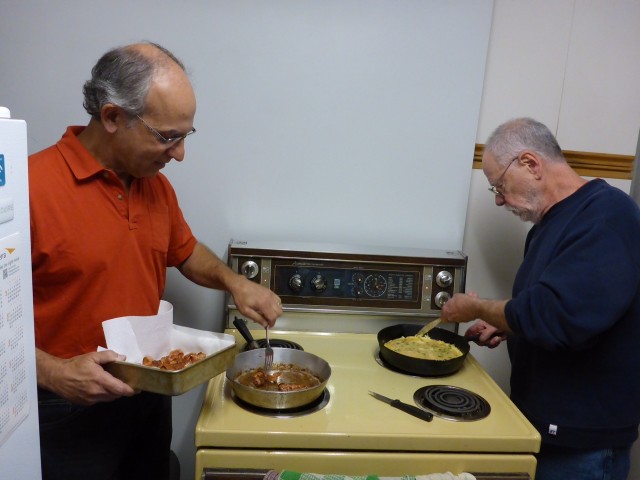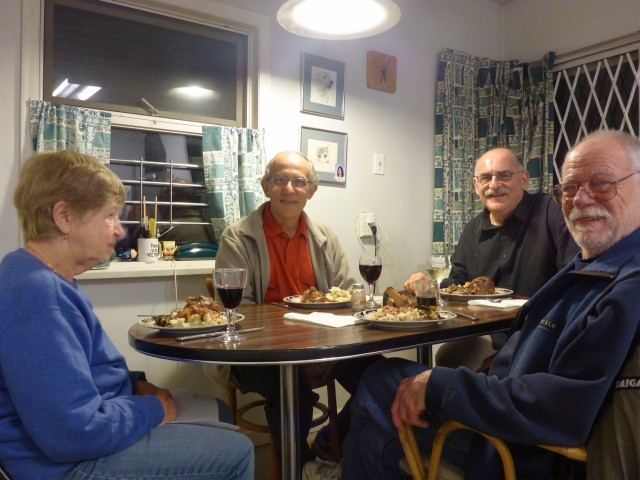Category Archives: Film
Bearing Witness: Paula Neuman Gris
Bearing Witness: Paula Neuman Gris from The Breman Museum on Vimeo.
Remarkable Stories from the Holocaust
With her mother performing backbreaking labor for the Nazis in the rock quarries of Transnistria, Paula Neuman Gris was the sole caretaker of her baby sister. Barely older than a toddler herself, Paula had to use her own smarts and spirited nature to survive. Experience Paula’s incredible story of determination at the Breman’s Bearing Witness, Jan. 17, 2016.
The Dreamed Ones
THE DREAMED ONES
The themes of love and hate are depicted in the movie DIE GETRÄUMTEN (The Dreamed Ones). At center stage are the two poets Ingeborg Bachmann and Paul Celan, who came to know each other in post-war Vienna. Their dramatic postal exchange creates the textual basis of the film. Two young actors meet in a recording studio to read the letters. The tumultuous emotions of proximity and distance, fascination and fear captivate them. However they also enjoy each otherʼs company, arguing, smoking, discussing their tattoos and favourite music. Yesterdays love, todays love and tomorrows: where the lines are blurred lies the heart of the film.
Read more at: http://www.diegetraeumten.at/e/15-en/
Plain-Talking: Radio Free Europe on (a) Vanished World
Jewish Life in Poland Pre-WW2
Happy Birthday, Edgar Hilsenrath!
goodreads: Edgar Hilsenrath (born [April 2] 1926) is a German-Jewish writer living in Berlin. His main works are Night, The Nazi and the Barber, and The Story of the Last Thought.
Hilsenrath was born in Leipzig. In 1938 his mother escaped with her two children to Siret (Sereth), in Romanian Bukovina, where they enjoyed a respite from persecution. At the time that he should have received an entrance card to higher education, he and his mother were interned in the ghetto of Cernăuţi (Czernowitz).
He began to write about the Holocaust after his liberation when he moved to Paris. Hilsenrath also lived in Palestine, Israel, and New York.
According to Dagmar C. G. Lorenz, Simon Wiesenthal Center, “Hilsenrath calls things by their proper names and portrays life first and foremost as physical existence, of whose details the reader is constantly made aware: birth, nursing, feeding, sex, and excretion accompanied by feelings of pleasure and pain. The rhetoric of politicians and political theory are shown to be the schemes of beings ultimately dependent on these bodily processes and subject to physical desires. Hilsenrath’s very approach is a protest against disrespect toward the mortal body, against the tyranny of the mind over matter.”
The Liberation of Bukovina – The Capture of Czernowitz (1917)
General Eduard von Böhm-Ermolli at his command post; briefing with Austrian officers at the map table [00:10]; destroyed bridges over the Pruth before Czernowitz [02:11]; Austrian troops bivouac on the banks of the Pruth [03:04]; horsepond [03:49]; Czernowitz after being taken on 3rd August 1917: burning railway station building and burning crossties [04:37]; destroyed dome of the railway station [05:50]; ruins of houses [06:23]; the fire brigade extinguishing flames [07:14]; children in the city streets [07:25]; Austrian troops march past Archduke Franz Joseph on 4th August 1917 in Czernowitz [07:42].
Source: EFG european film gateway & filmportal.de
Bukovina History Conference – at the Hebrew University of Jerusalem
Thank you Irene Fishler for supplying a Hebrew language brochure (below) describing the conference coming up on March 15, 2016. The organizer’s contact information may be found a the bottom of this page:
Dr. Ronit Fischer
Center for Jewish History
We are honored to invite you to a convention entitled:
Society and History of Bukovina
The “Multi-Kulti” district of Rumania
on
March 15, 2016
Room 15, Meyersdorf building
Mount Scopus
Jerusalem
9:00-9:30 coming together and refreshments
9:30-10:00 greetings
- Professor Uzi Rebhun, Director of the Center for Research on Romanian Jewry
- Mrs. Andreea PăstârnacAmbasador of Rumania in Israel
- Professor Dror Wahrman, Dean of Humanities at the Hebrew University of Jerusalem
- Mr. Micha Harish, Chairman of the AMIR organization.
- Dr. Sa’ar Pauker, representative of the Pauker family.
10:00-11:15 First Session
Bukovina as a Symbol for Multi-Culturalism
Chairman: Professor Daniel Blattman Hebrew University
- The Jews of Bukovina as a symbol for Romanian heterogeneity in the inter-war period
Dr. Ronit Fischer, Hebrew and Haifa Universities. - To describe and imagine Czernowitz – Professor Ya’avetz and his town.
Dr. Rafael Vago, Tel Aviv University - Back to Czernowitz, a paradox of memory and nostalgia – a historic-anthropologic approach.
Dr. Florence Heyman, The French Research Center in Jerusalem. (CNRS-NAE).
11:45 – 13:30 Second Session
A Small District – Many Worlds of Multi-Cultural Creativity
Chairman: Dr. Amos Goldberg Hebrew University
- What happens to the multicultural character of Bukovina after the holocaust? Paul Celan Dan Pagis, and Aharon Appelfeld. Sidra de Koven-Ezrahi, The Hebrew University.
- The Jewish theater of Czernowitz during the transition between Romania and the Soviet Union.
Ms. Dafne Dolinko The Hebrew University and Yad Va’Shem. - “My Bukowiner”. The writer Nava Semel returns to the lives of her grand parents and to the place where her family originated.
Organizer: Dr. Ronit Fischer
EHPES Bukovina Summit Vancouver 2015

The unseen Summit photographer, moustachioed and bearded — Mishak
The boss and his assistant prepare breakfast — you might think the boss is making bacon, but it’s actually chicken. Assistant concentrates on removing omelette from pan.
Having survived breakfast, it’s time for dinner — lamb shanks, mashed potatoes, brussel sprouts, all prepared by Winnie, Jerome’s consort. Stories and breakfast; stories and dinner and stories in between.
The Shipwreck of the RAFIACH
This is about the shipwreck of the RAFIACH. I am one of the survivors.
Hope you find it interesting.
Ruth Glasberg Gold
Written by Pat Johnson. His writing has moved me beyond words.
Rescuing the Rafiach
Friday 19th, June 2015 Written by Pat Johnson
in TV & Film
A screenshot from Gad Aisen’s documentary, which has its Canadian première at the Rothstein Theatre June 28.
After the Holocaust and the Second World War, the British government that controlled Mandate Palestine severely limited Jewish immigration, continuing the restrictive policies from before the war. But the Jewish underground in pre-state Israel was operating a steady movement of illegal transports bringing Jews – mostly Holocaust survivors – from Europe to the Yishuv.
In November 1946, the ship code named Rafiach set off from Yugoslavia with 785 passengers. Twelve days into the voyage, a storm forced the ship to seek refuge in a bay on the tiny Greek island of Syrna but it ran aground and, within an hour, sank. The vast majority of passengers survived, crawling from the water onto the island, which is little more than a craggy rock, or jumping from the ship before it was fully immersed. It is not known exactly how many passengers drowned.
Among those who survived and eventually made it to Palestine were Lili and Solomon Polonsky z”l. Their daughter, Tzipi Mann, lives in Vancouver. She knew that her parents and some of their friends had been on the ship, but she had never delved into details. By the time her curiosity was piqued, her parents had passed away. But her quest to uncover the story of the Rafiach and its passengers has led to a documentary film that will screen here in its Canadian première on June 28.
Code Name: Rafiach is directed by Israeli filmmaker and television personality Gad Aisen, but he credits Mann as being the driving force behind the project.
Aisen is the creator of a TV show on Israel’s Channel 10 called Making Waves, about nautical topics. He served seven years in the Israeli navy before obtaining an MFA in cinema from Tel Aviv University. He had never heard of the Rafiach before he was approached by a student of Mevo’ot Yam Nautical School, who thought it would make a good topic for Aisen’s TV show.
Code Name: Rafiach is a story about Holocaust survivors finding a place in the world and also about the Jewish underground risking their lives to smuggle Jews into Mandate Palestine. There are many narratives of this sort, Aisen acknowledged, but the Rafiach’s tragedy and the rescue make this one especially poignant.
Because it is not possible to produce a story of nearly 800 people, the filmmaker decided to focus on a few individuals. One is Shlomo Reichman. Known to the circle of people around the film as “Shlomo the baby,” Reichman, now a grandfather, was thrown to safety from the ship.
“This man’s story was particularly touching because he was a newborn,” Mann said in a telephone interview. “He was three weeks old and he was tossed onto the rocks, but he wasn’t sure who tossed him. Was it his father, or was it someone else? For Shlomo, this has been sort of the core of his existence – who tossed me onto the rocks?”
The fact that the passengers were Holocaust survivors magnifies the impact of the incident, Mann said.
“If you can imagine Holocaust survivors having to deal with this,” she said. “There were so many personal, emotional issues attached to everything.”
In interviews, Mann and Aisen learned that adults who first made it to shore from the listing ship lay on the rocks to create a softer landing for those coming after.
For Mann, the Rafiach became a sort of obsession.
“In 2010, just one morning I thought, I need to find out more about this,” she said. “My intention was originally to try to write a book and I thought the only way I can do this is by being in Israel.”
She made arrangements to head for Jerusalem and enlisted the help of her cousin, Sara Karpanos, who lives there. They put an ad in an Israeli newspaper and the response was so overwhelming the pair had to rent a hotel space for a reunion of 200 Rafiach survivors and, in some cases, their children and grandchildren.
Unbeknownst to the two women, Aisen was already on the story. After being turned on to the history of the ship, Aisen had connected with an instructor at Israel’s naval high school who had led his students on a dive and recovered a couple of artifacts from the hulk of the Rafiach.
From what had seemed like lost history, Mann saw the story of the Rafiach begin to reveal itself. “A complete mystery was unraveling in front of me,” she said.
For Aisen, the story of the Rafiach “captured my heart, and I feel particularly connected to this story from many aspects, as a sailor, an Israeli and Jewish.”
To tell the history of the Rafiach in a documentary, he decided to use animation, which allowed him to be more creative than merely showing interviews with survivors.
“It enabled me to present the film in the present tense and not as a memory from the past,” he said. “It took me about six years to create the film, five journeys abroad, months in the archives, 300 hours of footage and a year’s work of three animators. But one of the more challenging things was to get to the wreck of the Rafiach and to dive and film inside.”
In a way, Aisen said, making the film let him vicariously live the life of an underground commander of an immigrant ship.
The Vancouver Jewish Film Centre presents Code Name: Rafiach on June 28, 7 p.m., at the Rothstein Theatre. Tickets are $10 and available at vjff.org.
———————–
Pat Johnson is a Vancouver writer and principal inPRsuasiveMedia.com.






